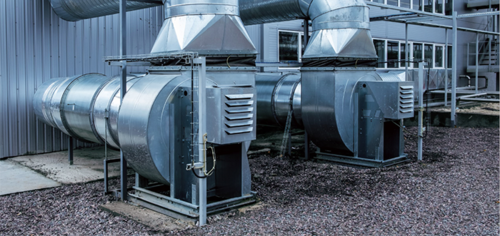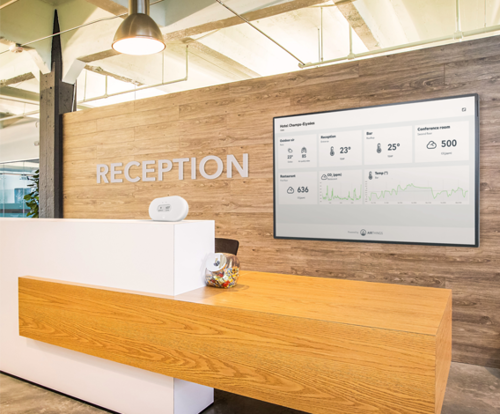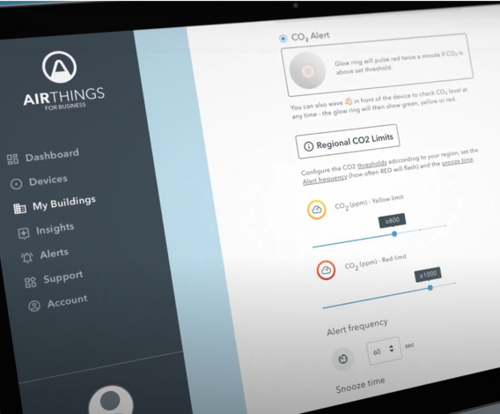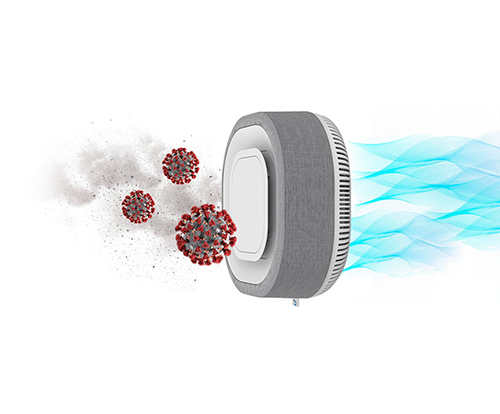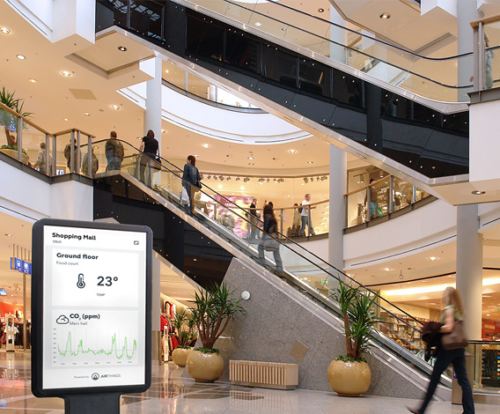
How does air quality affect your business
Lower productivity
Research shows that poor air quality in workplaces can have a significant negative impact on the cognitive functioning of employees, including slower response times and the ability to focus, adversely affecting productivity.
A double-blind study from the Harvard School of Public Health shows that people working in well ventilated offices with low levels of pollutants have double the cognitive function of those in offices with average levels of exactly the same pollutants.
Another one-year study, which included participants in offices across six countries working in a variety of fields, including engineering, real estate investment, architecture, and technology, found that increased concentrations of fine particulate matter (PM2.5) and lower ventilation rates, measured using carbon dioxide (CO2) levels, were associated with slower response times and reduced accuracy on a series of cognitive tests. Researchers noted impaired cognitive function at concentrations of PM2.5 and CO2 that are common in indoor environments today.
“In an average size meeting room without adequate ventilation, three people can cause CO2 to reach a level that affects their cognitive function in just 45 minutes.”

The studies add to the emerging evidence that air pollution has an impact on the brain. The findings show that high PM2.5 levels are associated with acute reductions in cognitive function. The studies also confirmed how low ventilation rates negatively impact cognitive functioning and suggests overall that poor indoor air quality affects health and productivity significantly more than previously understood.
For instance, people who work indoors may be exposed to a higher level of particulate matter (PM), a pollutant that consists of solid and liquid particles. This is especially likely in workplaces and offices with poor ventilation systems, as these particles can become trapped indoors with no way to leave. Once they’re inhaled, they can cause illnesses like asthma, COPD, coronary heart disease, stroke, and lung cancer. There is also evidence that links PM2.5 to low birth weight, diabetes and diseases such as Alzheimer’s and Parkinson’s. And, it has been proven that PM2.5 can cross from the lungs into the bloodstream and subsequently able to damage every organ in the body.
Better ventilation and filtration in workplaces to help prevent the transmission of viruses has the additional benefits of better cognitive functioning and productivity of employees, making healthy buildings key to public health and business strategy moving forward.
Latest Articles
The business risks emerging from the global COVID-19 pandemic
Read More >Why indoor spaces have a higher risk of virus transmission
Read More >Enhance HVAC performance, improve energy efficiency and reduce emissions
Read More >High absenteeism and reduced wellbeing
Read More >What the experts say
Read More >Risk indicators and monitoring
Read More >Ventilation and filtration
Read More >Transmission & Prevention
Read More >The History of Air Pollution
Read More >Ambient Air Pollution
Read More >Indoor air pollution & the indoor generation
Read More >Climate change and the climate emergency
Read More >What’s in the air we breathe outdoors?
Read More >What’s in the air we breathe indoors?
Read More >Other indoor biological pollutants
Read More >How air pollution affects our lives
Read More >

